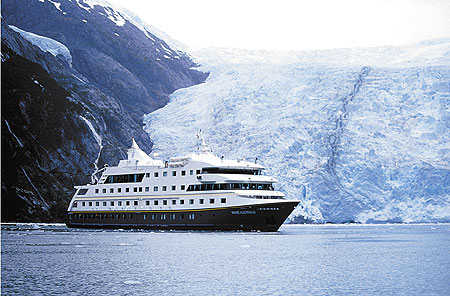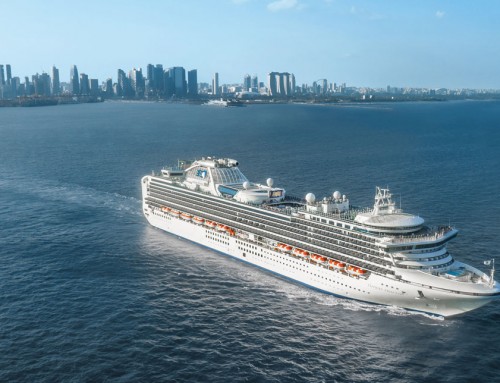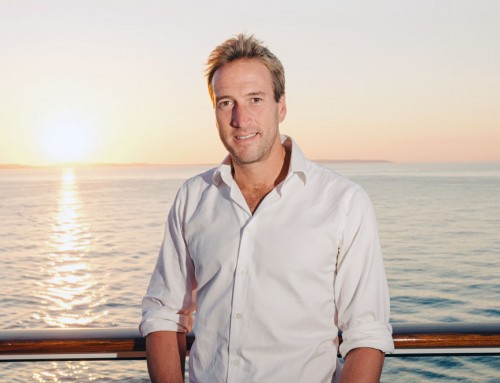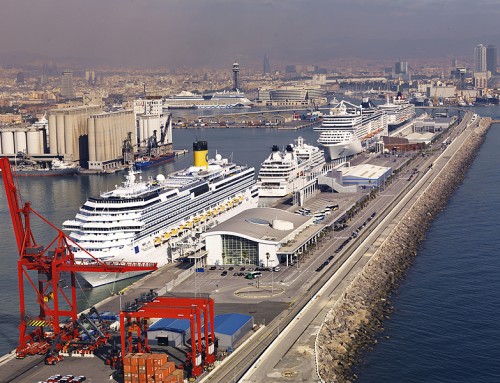 It will be some hours before the sun is over the yardarm. It has barely risen and the morning light still has a golden glow. I haven’t even had breakfast yet as I’ve been too busy getting acquainted with the penguins on Magdalena Island.
It will be some hours before the sun is over the yardarm. It has barely risen and the morning light still has a golden glow. I haven’t even had breakfast yet as I’ve been too busy getting acquainted with the penguins on Magdalena Island.
But as I clamber out of the Zodiac inflatable and remove my lifejacket, there’s a waiter offering me a glass of Johnnie Walker Black Label whisky on the rocks. The whisky is 12 years old, the ice 1,000 years old and until yesterday part of a glacier.
The heart-starter is a welcome addition to excursions from the expedition ship Via Australis, which sails between Ushuaia in Argentina and Punta Arenas in Chile to the tip of South America.
A couple of days ago the waiter was on the beach at Wulaia Bay where passengers followed in the footsteps of Charles Darwin who sailed there on HMS Beagle. Earlier that morning he had been pouring glasses for early risers, disappointed that a ferocious gale had prevented anyone from going ashore at Cape Horn.
Yesterday he was plucking chunks of glacier ice out of a fjord. And when he wasn’t offering warming whisky, he was mixing potent Pisco Sour cocktails, claimed by both Chile and Peru as their national drink.
Teetotallers need not be alarmed… there’s orange juice and hot chocolate as well.
The 2,700-ton vessel Via Australis, with 64 passenger cabins, plies these southern waters from September to April with her almost identical twin sister Mare Australis. There’s a three-night itinerary from Ushuaia, the southernmost city in the world, to Punta Arenas, and a four-night itinerary in the reverse direction.
This is no mega cruise ship. There may be two bars on board, but for much of the day they are used for lectures on the wildlife and the region’s history. The Sky Lounge, which leads on to the open deck at the stern, is reserved for Spanish speaking passengers, the Yamana Lounge immediately below the bridge is for English speakers.
The knowledgeable expedition crew give the talks, and in the evening there may be time for a David Attenborough documentary or a film about the Beagle, which was here 170 years ago. They also accompany excursions to point out interesting wildlife we might otherwise have missed or have been left wondering about.
A demonstration of the tango before we sailed from Ushuaia was the only time I saw any dancing on board, but fuelled by the unlimited free drinks from the bar (all included in the fare) a charity auction one evening got particularly lively. Wine at lunch and dinner is also included, and passengers sit at tables of eight or 10, allocated on boarding as the crew tries to ensure English-speakers are together. I found myself on a table with two American couples, and other passengers came from as far afield as New Zealand, Belgium and Brazil.
The first morning of the cruise was when we were scheduled to land at Cape Horn, but the wind was so fierce that passengers were forbidden from venturing on to the open decks, let alone into the Zodiacs.
We may not have been able to go ashore, but we were treated to an authentic Cape Horn experience.
Watching the spray crash against the windows of the Yamana lounge, named after the native tribe of Indians from Tierra del Fuego, I could only wonder at the fortitude of the brave men who sailed with Darwin, and earlier still with explorers such as Ferdinand Magellan and Sir Francis Drake. Their fragile wooden sailing ships were at the mercy of the world’s stormiest waters where the Atlantic and Pacific oceans meet, and there’s nothing but open sea between here and the shores of Antarctica, 500 miles further south.
Via Australis has stabilisers, and thanks to some seasickness tablets I was able to travel in relative comfort. But I was still glad when within a few hours we were back in the sheltered channels off Tierra del Fuego.
After Cape Horn came a landing at Wulaia Bay, where we saw birds of prey like the great crested caracara, and tasted wild calafate berries, just as Darwin would have done when he visited this remote spot in 1833. We also saw beavers which were introduced only 60 years ago and are now wreaking havoc in the virgin forest.
Via Australis then sailed back through the Beagle Channel and on to Chico Sound where we headed off in Zodiacs towards the Piloto and Nena glaciers, and colonies of imperial cormorants nesting on the cliffs.
At the head of a narrow fjord, and fed by the same icefield, the two giant tongues of ice are completely different. Nena is streaked with black boulders and stones and comes to a stop long before it reaches the sea. But Piloto is every child’s dream of a glacier, its jagged peaks shining a vivid blue – and it is constantly on the move. From mini-avalanches to calvings – when giant chunks crash into the sea – there was always something to see and hear.
It is the ice from Piloto which is gathered up and stored on the ship for use behind the bar. One crew member even takes some home each week to his father in Punta Arenas.
For many, the highlight of the short trip was our early landing on Magdalena Island in the Magellan Strait – a Chilean National Monument and sometime home to up to 120,000 penguins.
Barely 2ft tall, these Magellenic penguins are distinguished by the two black bands between their head and their chests, and by the fact that they live in underground burrows. The whole island is riddled with the holes they have excavated, and visitors have to stick to marked paths, or risk the ground collapsing under them.
Some of the creatures looked as bleary as I felt while others were making their way back to their nests, refreshed after a morning swim.
All too soon, the Zodiacs headed back for that glass of whisky, a substantial breakfast, and to pack. This was the last morning of the cruise and three hours later we were docking in Punta Arenas.
It would take a hardy idiot (like me?) to travel to Patagonia just for a three-day cruise. With stopovers, the flying time to Buenos Aires from the UK is at least 16 hours, and the onward flight to Ushuaia is the best part of four hours.
Most visitors will include the cruise in a longer South American tour, perhaps taking in Patagonia, or the magnificent Torres del Paine national park in Chile.
I stayed a few days in Buenos Aires, eating unfeasible quantities of beef in the asado restaurants, spending an afternoon exploring the incredibly ornate cemetery at La Recoleta where Eva Peron’s tomb is one of the least ostentatious, and visiting La Boca, a vibrant tourist area by day and home to the Boca Juniors football team.
My hotel, the art deco Moreno, was just yards aware from the Plaza de Mayo, the public square which was a centre for demonstrations long before the days when Evita addressed crowds from a balcony on the pink presidential palace.
Today there’s a group of Falklands War veterans camped in the square to protest about pensions, and, most movingly, it is the scene every Thursday afternoon of a parade by the Mothers of the Plaza de Mayo, still demonstrating against the regime which killed their sons and daughters in the so-called “Dirty War” from 1976 to 1983.
Wearing white headscarves and carrying faded pictures of their loved ones, they circle the square as the names of the dead are read out. Not your average holiday experience by any means, but one which moved me to tears.
What’s the deal
Cruceros Australis operates three-day cruises from Ushuaia to Punta Arenas, and four-day cruises in the reverse direction from October to April. Low season (October, March and April) from £630 for three days and £840 for four. High season (November to mid-March) fares from £797 (£1,062 for four days). See www.australis.com
A new larger ship – the Stella Australis, with 100 cabins, three bars and an exercise room – will join the fleet on December 18.
For details of the Moreno Hotel visit www.morenobuenosaires.com
- From the Sunday Mirror, Homes & Holidays section, published September 5, 2010






Leave A Comment